LightCone 8 Tutorial Part III – How Things are Computed
In Part I and Part II of this mini-series, we have briefly discussed the basic user interface and the use of charts to depict the LCDM cosmological model. In this final part of the tutorial, we will summarize the computational methods used for all the output values. This serves as reference material for the LightCone project.
Table of Contents
3.1 The Time-variable Hubble ‘constant’
LightCone8 basically uses only the first Friedmann equation and the LCDM model, written with the observable redshift (z) as the independent variable. This equation essentially calculates the Hubble expansion rate over the whole redshift range that we can (in principle) observe. Since increased redshift means observations from earlier times, it can also be viewed as how the Hubble ‘constant’ changed over time.
##H = H_0 \left(\Omega_\Lambda + (1-\Omega) (z+1)^2 + \Omega_m (z+1)^3 + \Omega_r (z+1)^4\right)^{0.5}##
where ##H_0## is the present observed Hubble constant. Further, [itex]\Omega_\Lambda[/itex] is the equivalent energy density parameter of the cosmological constant [itex]\Lambda[/itex], a.k.a “dark energy”; [itex]\Omega_m[/itex] is the present matter density parameter (normal plus dark) and [itex]\Omega_r[/itex] is the present radiation energy density parameter. The ##\Omega## without subscript represents the present overall density parameter: ##\Omega=\Omega_\Lambda+\Omega_m+\Omega_r ##, which adds up to unity in the case of flat space.
3.2 The Inputs
The four basic inputs ([itex]H_0[/itex], [itex]\Omega_\Lambda[/itex], [itex]z_{eq}[/itex] and [itex]\Omega[/itex]) are readily obtained from the public data releases of the WMAP and Planck missions.
Since the factor [itex]z + 1[/itex] occurs so often, an extra parameter (the “stretch factor”) [itex]S = z + 1[/itex] is defined, making the equations neater. S can be thought of as the factor by which the wavelength of observed light has been ‘stretched’ since emission. The use of [itex]S = z + 1[/itex] also makes it possible to calculate into our future (with S < 1), without having special switches for z < 0.
[itex]S_{eq}=z_{eq}+1[/itex] is the stretch factor at matter-radiation density equality, i.e. where matter density started to dominate over radiation density. Derivation from CMB observations put it at around S=3400, which translates to about T = 50 thousand years.
Finally, to specify the range of the redshift to be tabulated, LightCone uses upper and lower S-values and the number of steps required between them. When a chart is requested, the number of steps is automatically set to the maximum (100).
3.3 Calculations
In all calculations, the convention ##c=1## is followed, which is natural if time is given in years and distances in light-years.
The two density parameters not given as inputs are obtained as:
[itex]\Omega_m = (\Omega-\Omega_\Lambda) S_{eq}/(1+S_{eq})[/itex]
[itex]\Omega_r = \Omega_m/S_{eq} [/itex]
It is convenient for the integration process to write the expansion equation in terms of the variable Hubble time ##T_H## (where ##H## without subscript means the variable Hubble expansion rate and ##T## without subscript the variable cosmic time).
[tex]T_H = H^{-1} = T_{Ho} \left(\Omega_\Lambda + (1-\Omega) S^2 + \Omega_m S^3 + \Omega_r S^4 \right)^{-0.5}[/tex]
Since ##c=1##, this is numerically the same as the time-variable Hubble radius ##R_H##, which is referred to simply as ##R## in LightCone7.
Most of the output values calculated by LightCone7 are obtained by integrating the Hubble time (or radius) over a range of S values (i.e. a range of redshifts).
The cosmic time (at emission) for a galaxy now observed with stretch S:
[tex]T = \int_{s=S}^{s=\infty}{\frac{T_H }{s}}ds[/tex]
where ##s=\infty## implies cosmic time ##T=0##.
3.3.1 Distances
The present proper distance to a galaxy now observed with stretch S:
[tex]D_{now} = \int_{s=1}^{s=S}{T_H ds}[/tex]
The proper distance (at emission) to a galaxy now observed with stretch S:
[tex]D_{then} = \frac{1}{S} \int_{s=1}^{s=S}{T_H ds}=\frac{D_{now}}{S}[/tex]
The particle horizon (at emission) for a galaxy now observed with stretch S:
[tex]D_{par} = \frac{1}{S}\int_{s=S}^{s=\infty}{T_H ds}[/tex]
which gives the radius of the observable universe at that the time of emission of the observed signal. It is essentially our past event horizon.
The cosmic horizon (at emission) for galaxy now observed with stretch S:
[tex] D_{hor} = \frac{1}{S} \int_{s=0}^{s=S}{T_H ds}[/tex]
where ##s=0## implies the infinite future. It is essentially our future event horizon.
To obtain all the values, it essentially means numerical integration for S from zero to infinity, but practically it has been limited to 10−7 < S < 107 with quasi-logarithmic step sizes, e.g. a small % increase between integration steps.
3.3.2 Recession Rates
The present recession rate of a galaxy now observed with stretch S:
##V_{now} = H_0 D_{now}##
The recession rate (at emission) of a galaxy now observed with stretch S:
##V_{then} = H D_{then}##
The recession rate history of a ‘generic’ galaxy that is presently receding at one light year per year, equivalent to ‘c’:
##V_{generic} = aH = H/S##
Such a galaxy is presently at a proper distance equal to the Hubble radius, but due to the accelerated expansion, it is moving through the Hubble radius.
3.4 Conclusion
This then concludes the brief tutorial on the LightCone cosmological calculator, which was a collaborative effort from Physics Forums members. Any comments, suggestions, corrections, and requests for additional data will be welcomed.
Bibliography
1. Brian Powell, “Inflationary Misconceptions and the Basics of Cosmological Horizons”, https://www.physicsforums.com/insights/inflationary-misconceptions-basics-cosmological-horizons/
2. Tamara M. Davis, “Fundamental Aspects of the Expansion of the
The universe and Cosmic Horizons”, http://arxiv.org/pdf/astro-ph/0402278v1.pdf, Appendix A.
LightCone converts the equations to be in terms of stretch factor S (in place of t and a in Davis).
3. Burt Jordaan, “Approximate LCDM Expansion in Simplified Math”, https://www.physicsforums.com/insights/approximate-lcdm-expansion-simplified-math/
Male aerospace engineer
Play music, Read relativity and cosmology

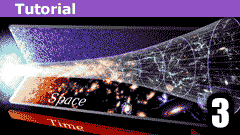
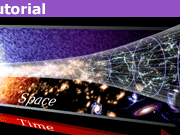

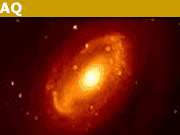
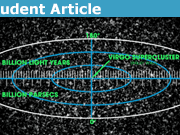
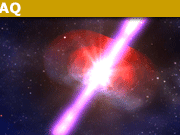
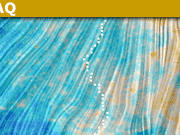
A very unique tool you've built! Brilliant!